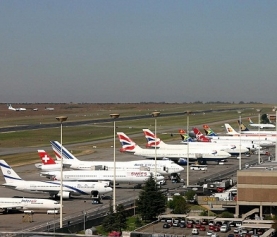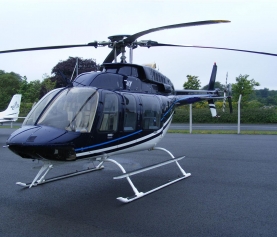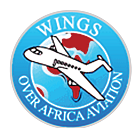
Test Flight For Piper Seneca V PA-34
Lined up on Vero Beach’s Runway R11, I put the power to the TSIO-360s and rotated in no time. Pitching for the Seneca’s best angle airspeed of 83 knots, I retracted the gear once a positive rate was established, and the useable runway slipped away below us.
074-343
It was humid day in South Florida, with some scraggly low clouds to man oeuvre around as we climbed briskly in VFR conditions out over the Atlantic. At 5500 feet, I found a slice of airspace to execute a series of man oeuvres, starting with 50-degree steep turns, power-on and –off stalls, and some brisk climbs and descents. Through it all, power response was smooth and control pressures balanced.
The Seneca might not be quite the pilot’s airplane that a Baron is, but it is close. Next, I switched on the autopilot, so Kronsnoble and I could dig deeper into the G1000 system. With some prompting, I was able to programme a hold at my current position and let the autopilot fly a smooth teardrop entry into an oval racetrack pattern.
I then hit the autopilot disconnect switch on the yoke and hand flew a circuit in the hold. It really could not have been easier thanks to the G1000s fight director cues and the Seneca’s natural stability keeping us on a precise track.
Some pilots prefer a conventional elevator to the Pipers stabilator, but I had no complaints. It felt right. For our next technology demonstration, Kronsnoble called up the sitcom page on the MFD and showed me how to place a telephone call. I dialed the number he gave me using the straight forward G1000 interface, and just like that, the phone was ringing in my headset. Somebody back at the Piper factory picked up and confirmed they heard us loud and clear.
They sounded good on our end, too. Thanks to the Iridium satellite networks global coverage, calls can be made and received literally anywhere in the world. The same goes for emails and next messages sent using the service. (Keep in mind, though, that outgoing calls cost $1, 50 per minute and incoming calls as much as $4 a minute).
There wasn’t any icing for us to sample, but this Seneca was fitted with full and approved de-icing equipment. Ice protection is optional, but virtually all Seneca’s come with it. Another option this Seneca had, which is probably well worth the extra cost in hot climates, is PiperAire air conditioning -it will set you back an additional $ 22000, but you’ll be glad you sprang for it when the asphalt is scorching.
Piper claims a maximum speed of just over 200 KTAS at the Seneca’s 25000-foot ceiling. I saw cruise speeds at our lower altitude on the day of my test of around 173 KTAS .That is still respectable speed, though a bit slower than a turbo-Baron .At 2500 rpm, the aircraft was burning around 12, 5 gph (47 litres) per side .
Throttling back slowed us to the mid-150s and fuel burn dropped to around 10 gph (37, 8 litres) per side. Next, we headed back to the airport to try a few circuits in the pattern.Heres where the Seneca shines, in my opinion. Turning final with two notches of flaps (25 degrees) at 90 knots provides a nicely stabilized descent path.
Once the runway was ensured on my first try, I selected full flaps and rounded out for a nice landing. For the next try, I flew with two notches of flaps all the way down final, which allows for a nice tail-low touchdown. I found that the reshaped instrument panel affords good visibility in the flare, providing just the right visual cues to ensure consistently smooth arrivals.
Engine-out performance in the Seneca V is respectable, with a single-engine rate of climb at sea level of 253 fpm.That is at a lower speed than some other light twins, too, so the single-engine climb gradient is comparatively better.
At 8000 feet and ISA+10 ,the Seneca V will still climb at better than 143 fpm.Even at 16000 feet and maximum gross weight the aircraft will barely manage a climb, providing just the peace of mind pilots who opt for twins expect.
As mentioned earlier, sales in many countries, notably Brazil, have been a bright spot for Piper, precisely because of the Seneca’s engine-out capability.
Flight schools are also taking a closer look at the Seneca, along with Pipers other light twin, the Seminole. It should come as no surprise that there has also been a good deal of renewed interest among personal fliers and even air taxi outfits. Add them all up, and the Seneca V long list of positive attributes compares favorably against the competition.
Not that the Seneca V has much competition ,of course .The Beech craft G58 Baron, Piper Seminole and Diamonds DA42 are the only other all-weather piston twins in production today, and none of them goes head-to-head with the Seneca. The Baron is a better performer with a price tag to match. The DA42 and Seminole seat only four, a limitation that eliminates them from consideration for many light twin shoppers.
That leaves the Seneca in a market niche all of its own. Piper is doing an admirable job of capitalizing on the dearth of new piston twins in the market by making the Seneca’s cabin even more comfortable and convenient with a variety of amenities, including a cooler integrated into the centre armrest.
An attractive two-tone paint scheme is another nice touch in the modern –looking space. The Seneca’s large and comfortable cabin also helps accentuate its big airplane feel, as always.
The fact that buyers are left with few alternatives when shopping for a new light twin should not be a deterrent.
For a great many buyers looking for a complete personal airplane with cockpit technology to match, the Seneca V answers the call. Piper manufacturer of Seneca V has done improvements on the avionics and cabin to the modern technology and this makes the Seneca V exceptional from the other twin engine piston light aircraft like DA42,Seminole and the Baron G58/55.In comparison the Seneca V is comfortable,efficient,reliable and cost effective in fuel and maintenance which is a plus opposed to the other twin piston aircraft.
1Z0-522
Flying schools globally have PA-34 Seneca in their fleet for training Multi Engine and Instrument rating flights due to its low consumption of fuel and maintenance. Seneca V cruises at only 20 knots slower than the Baron G58 but its operating costs are far lower. Anthony A Juma is the Editor and Director Commercial and Flights Operations at Wings Over Africa Aviation Limited.





